 |
 |
 |
| |
Effect of daclatasvir/asunaprevir/beclabuvir in fixed-dose combination on the pharmacokinetics of CYP450/ transporter substrates in healthy subjects
|
| |
| |
Daclatasvir Combination Cautions with CYP2C19, CYP3A4, and CYP2D6 Agents.
17th International Workshop on Clinical Pharmacology of HIV and Hepatitis Therapy, June 8-10, 2016, Washington DC
Mark Mascolini
Daclatasvir (DCV), asunaprevir (ASV), and beclabuvir (BCV) fixed-dose combination (DCV-TRIO) should not be given with drugs solely eliminated by CYP2C19, according to results of an analysis in 20 healthy volunteers [1]. Findings indicate that substrates of CYP3A4, CYP2D6, and OATP should be coadministered cautiously with DCV-TRIO.
DCV-TRIO (DCV/ASV/BCV 30/200/75 mg twice daily) is in phase 3 trials for chronic HCV infection [2,3]. Bristol-Myers Squibb (BMS) investigators evaluated the fixed-dose combination with or without an additional 75 mg of BCV on the single-dose pharmacokinetics of probe CYP and transporter substrates in a single-sequence, five-period study that enrolled 20 healthy volunteers.
The 20 participants ranged in age from 18 to 43 years and in body mass index from 19 to 31 kg/m(2). Nineteen volunteers were men, 10 were white, and 7 were black.
On study day 1 they took a probe cocktail containing single doses of 200 mg caffeine (CYP1A2 substrate), 50 mg metoprolol (CYP2D6), 10 mg montelukast (CYP2C8), 50 mg flurbiprofen (CYP2C9), 40 mg omeprazole (CYP2C19), 5 mg midazolam (CYP3A4), 0.25 mg digoxin (P-glycoprotein), and 40 mg pravastatin (OATP). On days 6 to 15 they took DCV-TRIO twice daily, and on day 16 they took single doses of the cocktail with DCV-TRIO. They continued DCV-TRIO through day 35, adding an extra 75 mg of BCV twice daily on days 21 through 30 (an adjustment for differential BCV exposure in HCV patients). On day 31 they took another single dose of each cocktail component. The BMS team collected samples for 6 days after each probe dose, and they used linear mixed models on log-transformed data to assess geometric mean ratios for standard pharmacokinetic measures.
DCV-TRIO had no meaningful impact on substrates of CYP1A2, CYP2C8, or CYP2C9 (geometric mean ratios and 90% confidence intervals within the standard 0.8 to 1.25 bounds).
DCV-TRIO weakly to moderately induced CYP2C19, as indicated by a 43% lower omeprazole maximum concentration (Cmax) and 52% lower omeprazole area under the concentration-time curve (AUC). The additional 75 mg of BCV moderately induced CYP2C19, as indicated by 40% lower omeprazole Cmax and 66% lower omeprazole AUC.
Additional BCV had no impact on exposures of CYP1A2, CYP2C9, CYP2C8, CYP2D6, CYP3A4, P-glycoprotein, or OATP probes.
As in previous work, DCV-TRIO weakly to moderately induced CYP3A4 (midazolam Cmax 43% lower and AUC 47% lower) and weakly to moderately inhibited CYP2D6 (metoprolol Cmax 40% higher and AUC 71% higher). The fixed-dose combination weakly inhibited P-glycoprotein and weakly to moderately inhibited OATP, as indicated by a 101% higher pravastatin Cmax and 68% higher pravastatin AUC.
The BMS investigators conclude that DCV-TRIO "should be administered with caution" with substrates of CYP3A4, CYP2D6, and OATP and should not be administered with drugs eliminated solely by CYP2C19.
References
1. Tao X, Sims K, Chang Y, et al. Effect of daclatasvir/asunaprevir/beclabuvir in fixed-dose combination on the pharmacokinetics of CYP450/ transporter substrates in healthy subjects. 17th International Workshop on Clinical Pharmacology of HIV and Hepatitis Therapy, June 8-10, 2016, Washington DC. Abstract O6.
2. Yang SS, Kao JH. Daclatasvir-containing all-oral regimens for the treatment of hepatitis C virus infection. Hepatol Int. 2016;10:258-266.
3. Everson GT, Sims KD, Thuluvath PJ, et al. Daclatasvir + asunaprevir + beclabuvir +/- ribavirin for chronic HCV genotype 1-infected treatment-naive patients. Liver Int. 2016;36:189-197.
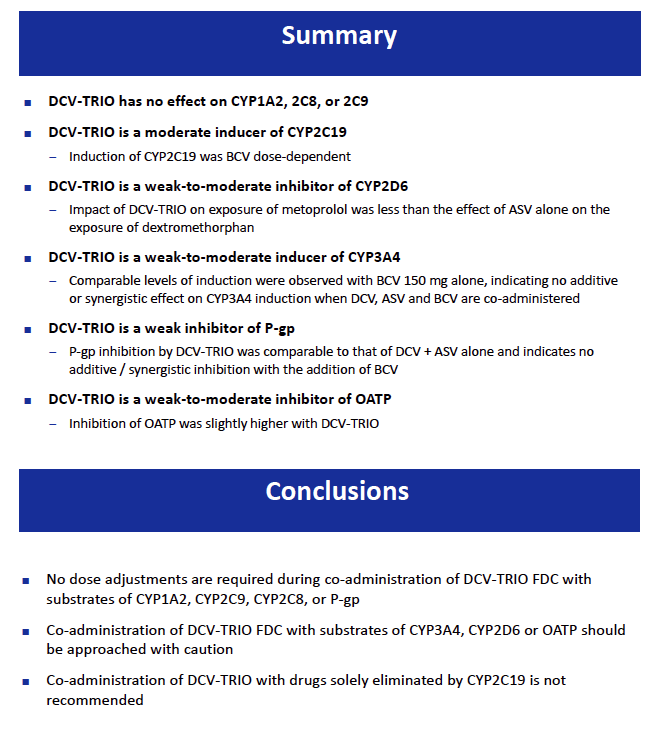
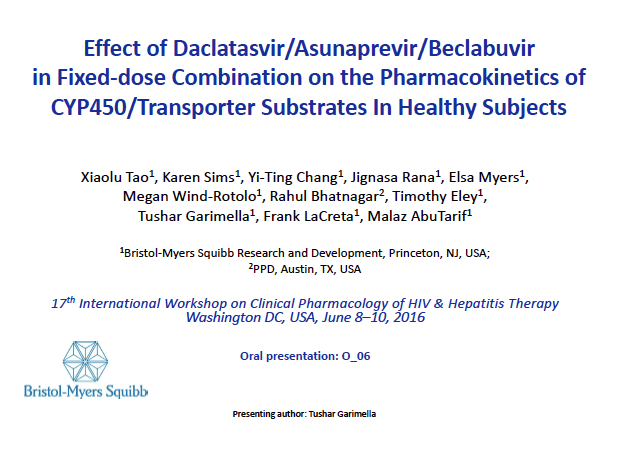
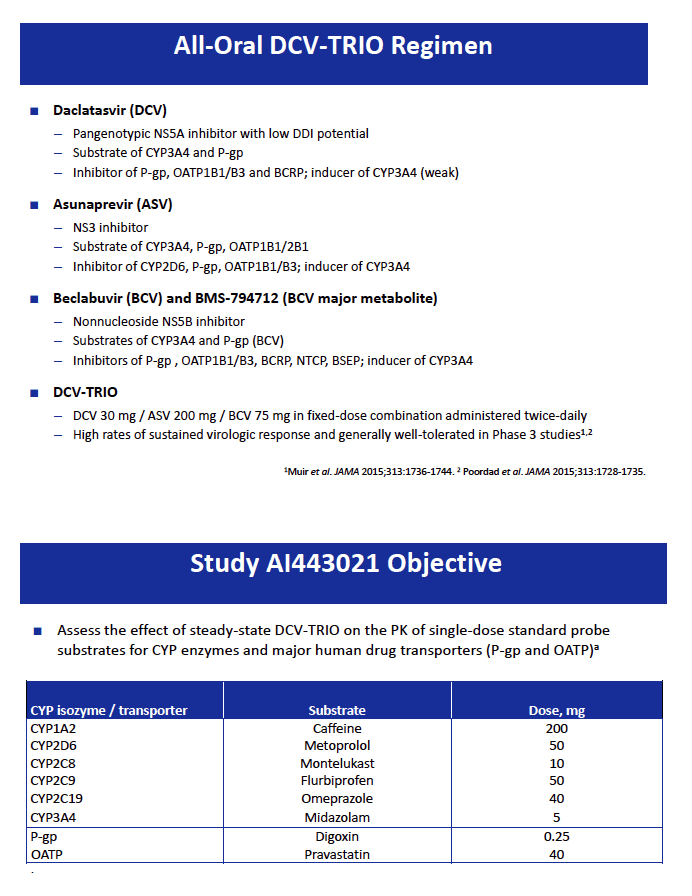

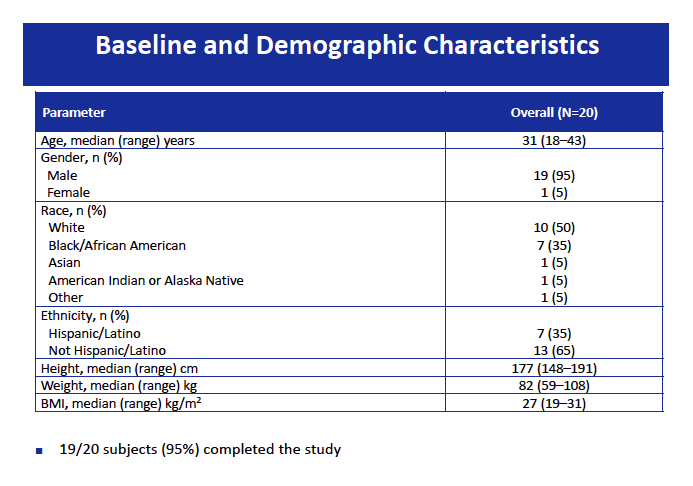
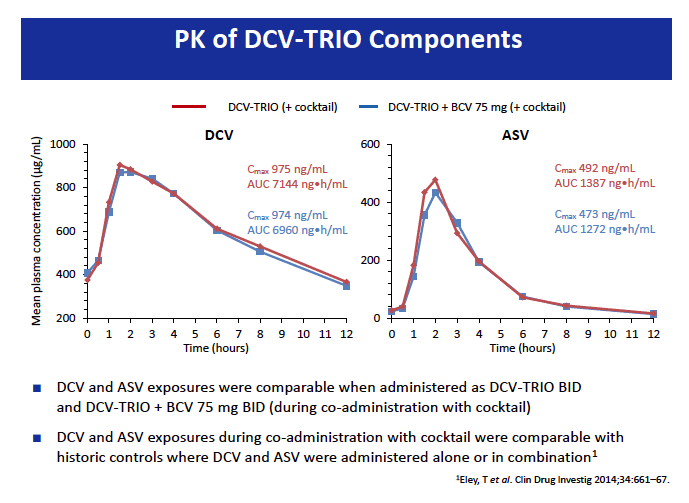
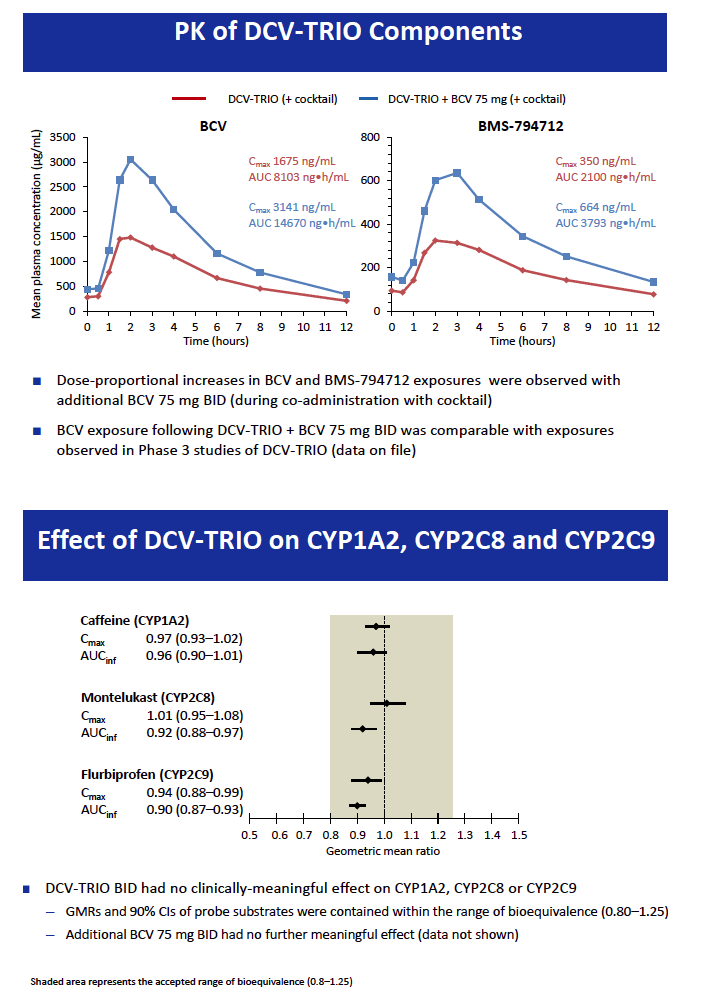
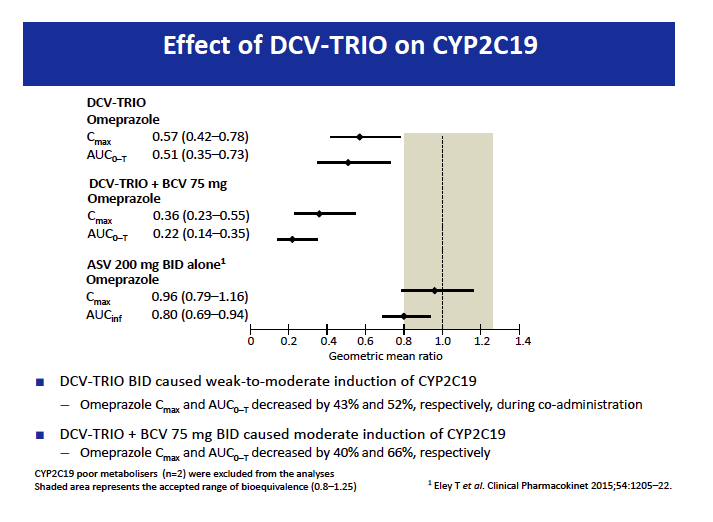
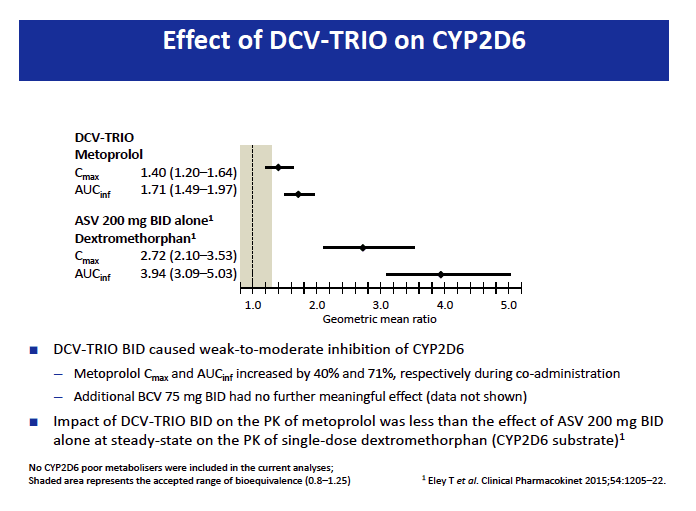
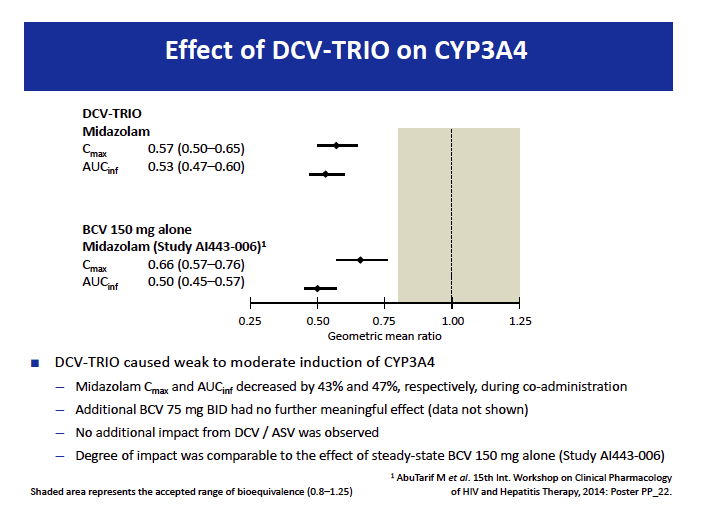

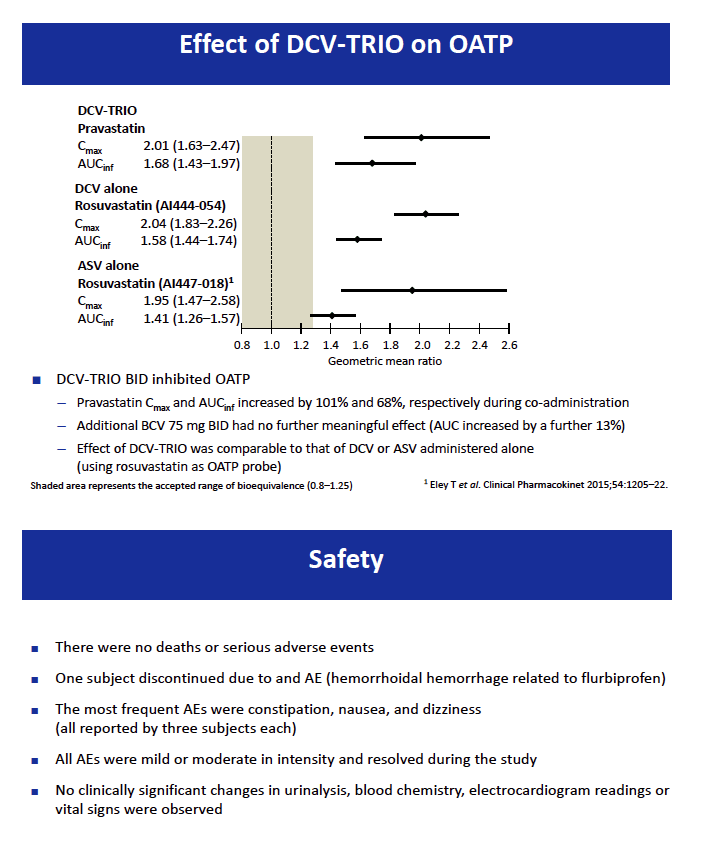
|
| |
|
 |
 |
|
|